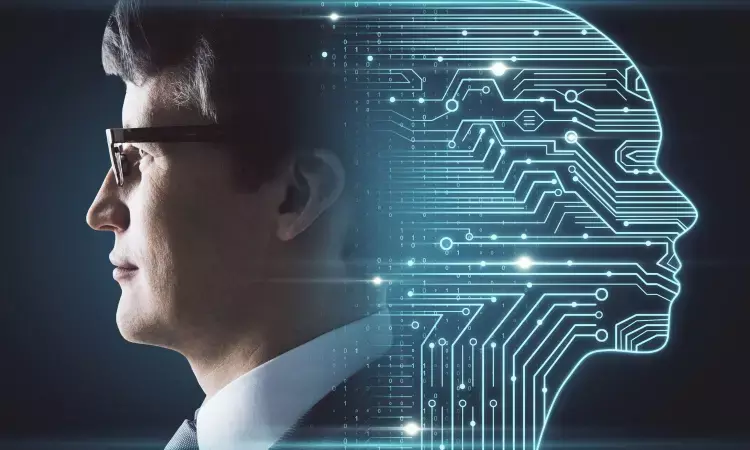- Home
- Medical news & Guidelines
- Anesthesiology
- Cardiology and CTVS
- Critical Care
- Dentistry
- Dermatology
- Diabetes and Endocrinology
- ENT
- Gastroenterology
- Medicine
- Nephrology
- Neurology
- Obstretics-Gynaecology
- Oncology
- Ophthalmology
- Orthopaedics
- Pediatrics-Neonatology
- Psychiatry
- Pulmonology
- Radiology
- Surgery
- Urology
- Laboratory Medicine
- Diet
- Nursing
- Paramedical
- Physiotherapy
- Health news
- Fact Check
- Bone Health Fact Check
- Brain Health Fact Check
- Cancer Related Fact Check
- Child Care Fact Check
- Dental and oral health fact check
- Diabetes and metabolic health fact check
- Diet and Nutrition Fact Check
- Eye and ENT Care Fact Check
- Fitness fact check
- Gut health fact check
- Heart health fact check
- Kidney health fact check
- Medical education fact check
- Men's health fact check
- Respiratory fact check
- Skin and hair care fact check
- Vaccine and Immunization fact check
- Women's health fact check
- AYUSH
- State News
- Andaman and Nicobar Islands
- Andhra Pradesh
- Arunachal Pradesh
- Assam
- Bihar
- Chandigarh
- Chattisgarh
- Dadra and Nagar Haveli
- Daman and Diu
- Delhi
- Goa
- Gujarat
- Haryana
- Himachal Pradesh
- Jammu & Kashmir
- Jharkhand
- Karnataka
- Kerala
- Ladakh
- Lakshadweep
- Madhya Pradesh
- Maharashtra
- Manipur
- Meghalaya
- Mizoram
- Nagaland
- Odisha
- Puducherry
- Punjab
- Rajasthan
- Sikkim
- Tamil Nadu
- Telangana
- Tripura
- Uttar Pradesh
- Uttrakhand
- West Bengal
- Medical Education
- Industry
AI-based algorithm relying on facial picture of patient may help diagnose facial nerve palsy

Facial palsy is a facial nerve disease. It occurs on one side of the face, leading to a loss of voluntary muscle control. Patients may experience various symptoms, such as taste and hearing problems, facial pain, sagging eyelids, and dry eyes. The disease affects approximately one in every 60 people, with pregnant women, diabetics, and those with a family history being at the highest risk of developing it. The incidence of FP is around 10%. Traditional diagnosis methods rely on the doctor's judgment and can be time-consuming and expensive. FP can be uncomfortable and disfiguring, making it necessary to develop an automatic system to detect FP accurately and fast.
In a paper published in BioMedInformatics, researchers proposed a diagnostic system based on CNN, which is highly accurate and modern. It can diagnose FP with an accuracy of 98% and detect the patient's gender and age. It is recommended as an auxiliary tool for doctors, nursing staff, and patients. The patient can use this system at home, reducing embarrassment, effort, time, and cost. Further work is being done to expand its diagnostic potential and diagnose more conditions.
FP is a neurological disorder affecting facial nerve (seventh nerve). The patient loses control of the facial muscles on one side of the face. It can occur in children and adults, regardless of gender. Diagnosis by visual examination is based on differences in the sides of the face. It can be prone to errors and inaccuracies. Detecting FP using artificial intelligence has become increasingly important and deep learning is the best solution for detecting this condition in real-time with high accuracy, saving patients time, effort, and cost.
This study used a dataset of 20,600 images. It had 19,000 normal images and 1600 FP images, to achieve an accuracy of 98%.
The present work proposes a real-time detection system for FP and for determining the patient's gender and age using a Raspberry Pi device with a digital camera and a deep learning algorithm.It effectively recognizes FP, pinpoints the affected facial side, and determines the patient's gender. Furthermore, it diagnoses the healthy person's condition and predicts their gender and age; multiple individuals simultaneously identify their gender and age, they explained.
The solution facilitates the diagnosis process for both the doctor and the patient. It could be part of a medical assessment activity, they added.
The proposed system has several advantages, such as a large amount of training data, real-time diagnosis and age/gender detection, and the use of a practical Raspberry Pi device. However, it has limitations in accurately diagnosing FP and detecting age due to variations in people's shapes (same age), difficulties in diagnosing when patients are moving, and challenges in distinguishing between facial deviations caused by accidents or deviations in the nose. Collecting data for disease cases can also be difficult due to patient embarrassment.
Reference:
Amsalam, A.S.; Al-Naji, A.; Daeef, A.Y.; Chahl, J. Automatic Facial Palsy, Age and Gender Detection Using a Raspberry Pi. BioMedInformatics 2023, 3, 455-466. https://doi.org/10.3390/biomedinformatics3020031
BDS, MDS in Periodontics and Implantology
Dr. Aditi Yadav is a BDS, MDS in Periodontics and Implantology. She has a clinical experience of 5 years as a laser dental surgeon. She also has a Diploma in clinical research and pharmacovigilance and is a Certified data scientist. She is currently working as a content developer in e-health services. Dr. Yadav has a keen interest in Medical Journalism and is actively involved in Medical Research writing.
Dr Kamal Kant Kohli-MBBS, DTCD- a chest specialist with more than 30 years of practice and a flair for writing clinical articles, Dr Kamal Kant Kohli joined Medical Dialogues as a Chief Editor of Medical News. Besides writing articles, as an editor, he proofreads and verifies all the medical content published on Medical Dialogues including those coming from journals, studies,medical conferences,guidelines etc. Email: drkohli@medicaldialogues.in. Contact no. 011-43720751


